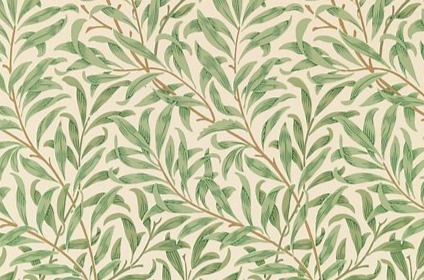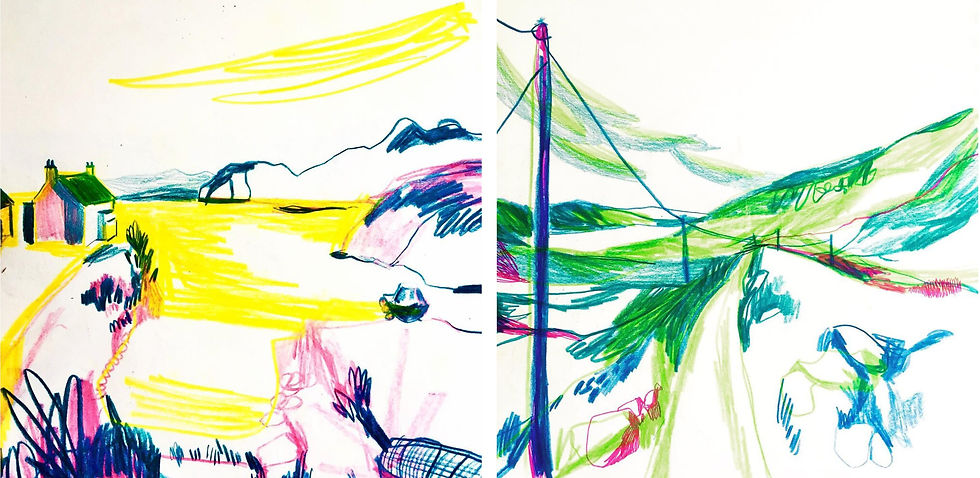On the first Tuesday of each month we're going to be working with Artists to deliver online creative workshops as part of the Tuesday Art Club.
Throughout these sessions they'll be the chance to discover different artforms, relax and have fun, whilst learning new creative art techniques and developing your skills.
Each month there'll be an opportunity to explore your creativity and work with a different Artist in a welcoming, informative and engaging session, all from the comfort of your own home.
Sessions will run from 10:30 - 12:00 and are £5 for ArtSpeak Members. All updates to the programme can be found on our Online Workshops page
Beginning in April, the first session of this series is -
Stencil and Patterns Workshop Tuesday 6 April, 10:30 - 12:00
Using the theme Patterns in Nature, Jane will guide you through how to adapt your drawings and ideas into a paper stencil which you will then use to create a unique painting.
Whilst building the composition of your painting you’ll develop your skillset and understanding of elements such as texture, shade and placement. This simple technique can give you impressive results and doesn’t require much equipment.
Visit our Online Workshops Page for a materials list and booking details

Wild Roses and Hazlenuts, Stained Glass, William Morris, (Fine Art America)
Stencil:
Stencilling produces an image or pattern by applying pigment to a surface under an intermediate object with designed gaps in it. The pattern or image is created by only allowing the pigment to reach some parts of the surface.
Pattern:
Pattern is a key part of organising and decorating design. In expressive art, pattern can be used to add variety to a composition, to reflect patterns used in the real world, or to help create a sense of rhythm, movement or unity.
Stencilling and painting with patterns is an art technique that has been adopted and continues to be explored by many famous Artists, many of whom have become renowned for their unique styles that are instantly recognisable.
ARTISTS RENOWNED FOR THEIR PATTERNS AND STENCIL WORK
We have selected a few Artists to highlight the broad range of work that can be achieved, and hopefully inspire you to have a go at producing your own stencils and patterns.
Banksy (1973) - Renowned for their often controversial and anti-authoritarian street artwork, Banksy began his career as a freehand graffiti Artist but started working with stencils in the year 2000.

The use of stencils enhanced the speed at which his iconic and recognisable images could be produced and can now be spotted in cities including London, Bristol and until recently, even Nottingham. Did you get chance to visit the Banksy artwork of the Hula – Hooping Girl before it was removed?
William Morris (1834 – 1896)
Starting his career as a painter, Morris extended his practice to Architecture and Interior Design and became one of the key figures in the Arts and Crafts Movement in the Mid-19th Century.

His wallpaper designs and textile patterns were some of the most commercially successful and are still admired today. During his career, William Morris produced over 50 wallpapers, two of the most famous designs are ‘Willow Bough’ and ‘Strawberry Thief’.
Strawberry Thief, William Morris, (V&A)

The success of Morris’ wallpaper designs was down to his well practiced and close observation of nature. He had a natural eye for pattern and produced papers that not only balanced figuration and order, but were distinctive. This was an unusual quality for work that was produced during this time.
Willow Bough, William Morris, (MET)
Inspired by the natural world, Morris drew on countryside and hedgegrow plants to populate his patterns and he looked to old-fashioned flowers from the garden to inform his designs. (National Trust)
Other products produced with his renowned patterns included tiles, stained glass, floor coverings, embroidery and furniture.
Gustav Klimt (1862 - 1918)

Known for his use of patterns in his murals and paintings, Klimt was a symbolist painter and a leading member of the Vienna Secession movement in 1897. Having rejected the traditionally conservative art scene in Vienna, and inspired by the Art Noveau and Arts and Crafts movements, the Secession movement gave Klimt and other contemporary Artists a platform to share their work. Klimt embraced this freedom and experimented with his art to develop the Symbolist style he came to be renowned for.
He developed a modern painting style that was ornate, elaborate and decorative, using patterns that were inspired by Byzantine, Greek and Egyptian Art and materials such as gold leaf.

Klimt is best known for the gilded and glistening work produced during a time that became known as the ‘Golden Phase’, a period which lasted about a decade during which some of his most famous and valuable artworks were produced.
Two pieces most popularly associated with this period were The Kiss and Portrait of Adele Bloch- Bauer.
OTHER SESSIONS AS PART OF THE TUESDAY ART CLUB
Landscape Drawing Workshop Tuesday 4 May, 10:30 - 12:00 Try out drawing techniques and be transported to the outdoors in this relaxing landscape drawing workshop with Artist and Illustrator Megan Wall. Landscapes are a great theme to focus on when developing your drawing skills; the varying compositions and features, whether natural or man-made, provide an array of opportunity to practice and build on techniques such as shading, texture and tone.
Visit the Online workshops page for more details and booking information.

Art Explosion - Soft and Oil Pastel Introductory Workshop Tuesday 1 June, 10:30 - 12:00
More details will soon be added to our Online Workshops page
If you have any suggestions of artforms you would like to see us cover, please get in touch with us - artspeak@radfordcaregroup.org.uk

Comments